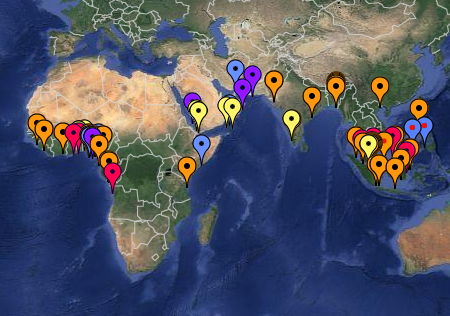Unbemanntes Airboat sammelt Daten in Katastrophengebieten
by: Thaddeus Herrmann
published: 25 October 2012
Es gibt Situationen, in denen muss die Crew zu Hause bleiben. Weil das Terrain nach einer Katastrophe zu kontaminiert ist oder auch, weil Menschen in bestimmte Gegenden nicht vordringen können.
Weil beispielsweise Straßen unter Wasser stehen.
Hier kommt Platypus ins Spiel. Die Firma ist eine Abteilung des Carnegie Mellon Robotics Institute und baut kleine Sumpfboote, die mit Hilfe von Arduino-Boards und einem Smartphone wichtige Informationen in den schwer zugänglichen Gebieten sammeln können. Das Gute daran: Es braucht nicht einmal teure, aktuelle Komponenten. “Gehirn” des Setups ist in diesem Fall ein Nexus S, gut verpackt in einer wasserdichten Otterbox. Fast jedes Android-Smartphone eignet sich für Missionen dieser Art. Arduino kommuniziert mit dem Telefon via Bluetooth, den Rest regelt die entsprechende App auf dem Telefon. Die nutzt auch die Kamera, um Informationen über die Umgebung zu sammeln und das Boot auf Kurs zu halten. Sensoren auf dem Boot sammeln kontinuierlich Updates beispielsweise zum Sauerstoffgehalt von Luft und Wasser, aber auch dessen PH-Wert und Temperatur.
Das Boot ist bereits krisenerprobt, im Video sieht man einen Einsatz auf den Philippinen nach einer Überschwemmung.
In September 2011, two undergraduate students and one engineer took five boats to the Philippines. They were joined by professors from the University of the Philippines and local aid organizations. Primary testing lasted for one week, after which the engineer and one of the students returned home leaving the other undergraduate student to continue testing. Testing was performed in several locations including Laguna de Bay, Taal Volcano, a village hit by flooding in the aftermath of twin typhoons, and a fish farm. A key aim was to have all five boats in the water at the same time, under the control of the same operator. This was achieved a number of times. In total, there were more than 15 tests in seven different locations.
Almost any Android-Smartphone can be used to power the brains of this unmanned search & rescue Platypus Arduino airboat, already successfully in use during floods in the Phillippines. On-board sensors continually provide updates on air and water quality. The phone’s camera keeps it on course and relays images to rescue teams about local conditions and survivors. An ingenious life saving, low-cost, hi-tech solution built from readily available components.
[youtube=http://youtu.be/Xr0g37bj0a0&rel=0]
























